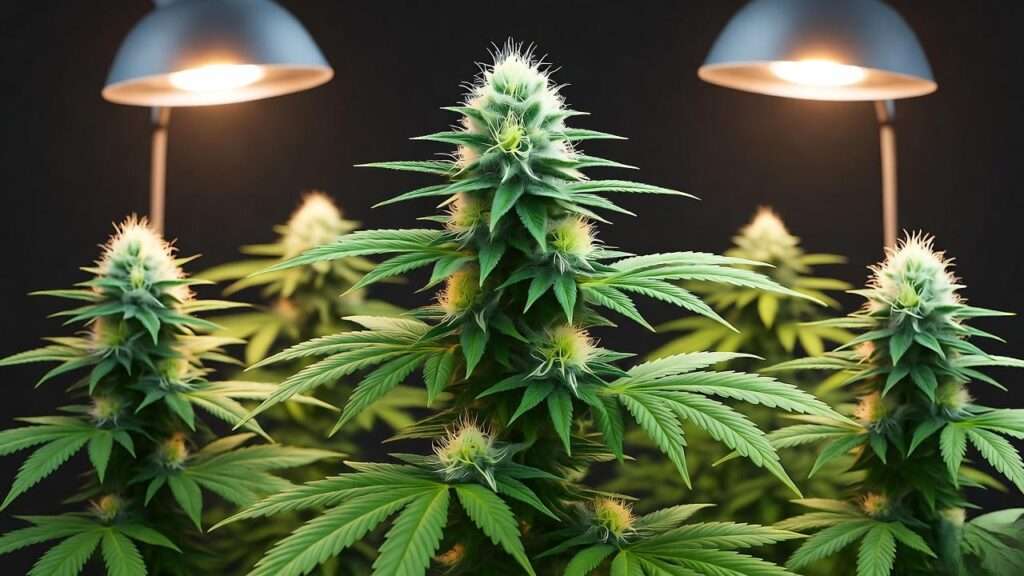Imagine doubling your cannabis harvest with one simple cut! Topping weed plants is a game-changing technique that transforms scrawny, single-stemmed plants into bushy, bud-packed powerhouses. Whether you’re a home grower or a seasoned cultivator, mastering topping can skyrocket your yields and create healthier plants. This expert guide dives deep into the art and science of topping weed plants, offering a step-by-step roadmap to maximize growth. Backed by years of horticultural experience and real-world results, we’ll show you how to top like a pro, avoid common pitfalls, and unlock your plants’ full potential. Ready to boost your buds? Let’s get started! 🌞
What Is Topping Weed Plants? 🌻
Definition and Purpose of Topping
Topping is a high-yield training technique where you snip off the top growth tip (apical meristem) of a cannabis plant’s main stem during the vegetative stage. This encourages the plant to grow wider rather than taller, producing multiple colas (bud sites) instead of one dominant cola. The result? More buds, better light distribution, and a stronger plant structure. Topping is a favorite among cannabis growers because it’s simple yet highly effective, often increasing yields by 20-30% when done correctly. 🌱
How Topping Differs from Other Training Techniques 🪴
Topping isn’t the only way to train cannabis plants. Here’s how it compares to other popular methods:
- FIMing: Similar to topping but involves pinching or cutting part of the growth tip, leaving some tissue intact. It’s less precise and may produce fewer colas.
- Low-Stress Training (LST): Gently bending and tying branches to create an even canopy without cutting. It’s less invasive but requires more maintenance.
- Screen of Green (SCROG): Uses a screen to train branches horizontally, often combined with topping for maximum effect.
Comparison Table: Topping vs. Other Techniques
| Technique | Pros | Cons | Best For |
|---|---|---|---|
| Topping | High yield, simple, promotes bushy growth | Slightly stressful, requires recovery time | Growers seeking maximum bud sites |
| FIMing | Less invasive, can create 4-8 colas | Less predictable, may not work as intended | Beginners experimenting with training |
| LST | Non-invasive, great for small spaces | Time-intensive, requires constant adjustments | Low-stress grows or autoflowers |
| SCROG | Maximizes light exposure, high yield | Complex setup, needs more space | Advanced growers with large setups |
Topping shines when you want a straightforward way to boost yield without complex setups. It’s ideal for both indoor and outdoor grows, especially if you’re aiming for a bushy canopy.
Why Topping Weed Plants Boosts Yield 📈
The Science Behind Topping
Topping works by disrupting the plant’s natural apical dominance, where the main stem hogs resources to grow tall. By cutting the top, you redistribute auxins (growth hormones) to lower nodes, encouraging lateral branches to develop into new colas. This creates a wider, more even canopy, allowing better light penetration and airflow—key factors for bigger, denser buds. Studies, like those from cannabis research journals, show topped plants can yield up to 30% more than untopped ones under optimal conditions. 🌟
Real-World Results: What Growers Can Expect 🌿
Take Jane, a home grower from Colorado, who topped her Blue Dream plants last season. Her untopped plants averaged 2 ounces each, while her topped plants yielded 2.8 ounces—a 40% increase! This isn’t unusual. Topping consistently delivers bushier plants with more bud sites, especially when paired with proper nutrients and lighting. Visuals of topped vs. untopped plants often show dramatic differences: topped plants are shorter, wider, and packed with colas, while untopped ones are tall and lanky with one main bud.
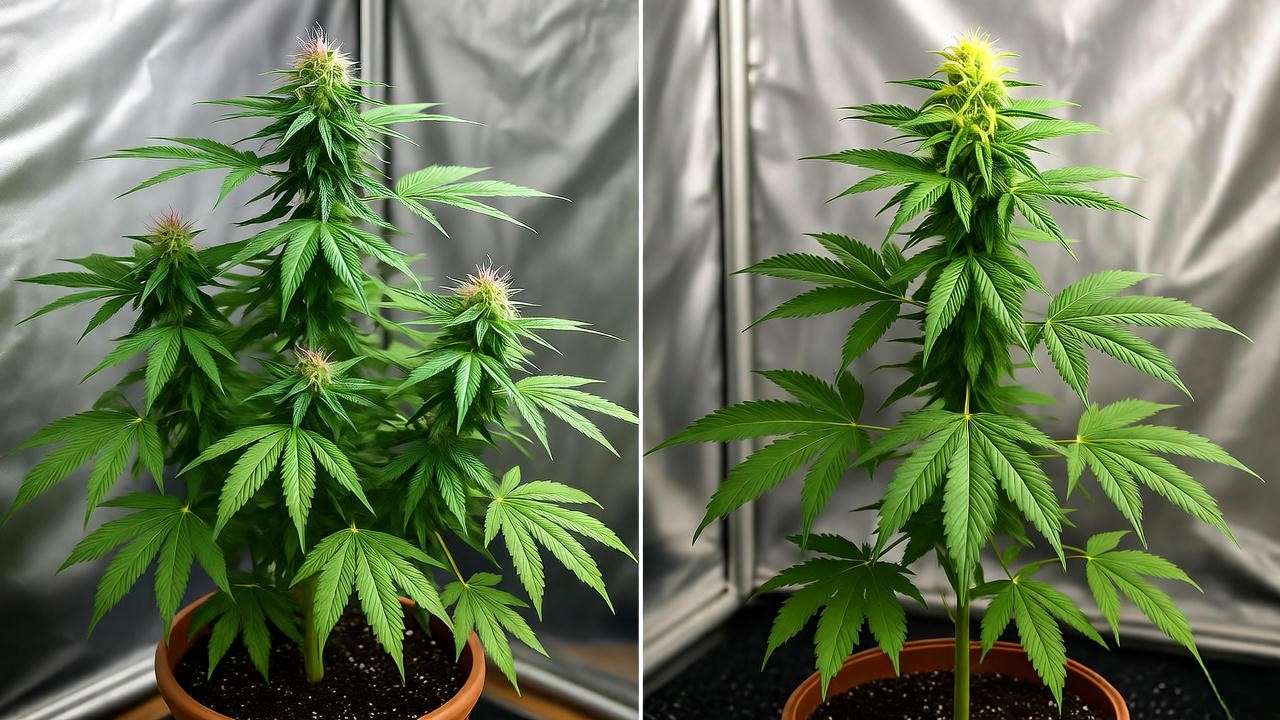
When to Top Weed Plants for Best Results ⏰
Ideal Growth Stage for Topping
Timing is critical for topping success. The best time is during the vegetative stage, when the plant has 3-5 nodes (sets of leaves). This ensures the plant is strong enough to handle the stress but not so mature that topping disrupts flowering. Look for:
- A healthy, vibrant plant with no signs of nutrient deficiency or pests.
- At least 3-5 nodes, typically reached 3-4 weeks into the vegetative stage.
- A main stem thick enough to support new growth post-topping.
Seasonal and Environmental Considerations 🌍
Indoor growers have more control, making topping easier to time. Aim for stable temperatures (70-80°F) and humidity (50-60%) to minimize stress. Outdoor growers should top early in the growing season (spring/early summer) to allow recovery before flowering. Monitor weather—excessive heat or rain can slow recovery. Tip: Always check your plant’s health before topping; weak plants may struggle to recover.
Step-by-Step Guide to Topping Weed Plants ✂️
Tools You’ll Need 🛠️
To top safely and effectively, gather:
- Sterilized pruning shears: Sharp, clean scissors prevent infection.
- Gloves: Keep hands clean and avoid transferring oils or pathogens.
- Alcohol wipes: Sterilize tools before and after use.
- Stakes or supports: Help stabilize the plant post-topping.
Recommended: Fiskars Micro-Tip Pruning Shears (available at most garden stores) for precise cuts.
How to Top Your Cannabis Plants 🌱
- Identify the main stem and top node: Find the newest growth tip at the top of the plant, usually above the 3rd or 4th node.
- Sterilize your tools: Wipe shears with alcohol to prevent disease.
- Make a clean cut: Cut just above the 3rd or 4th node, leaving a small stump to avoid damaging lower nodes. Aim for a 45-degree angle for optimal healing.
- Support the plant: Use stakes or soft ties to stabilize branches if needed.
- Monitor recovery: Check for new growth within 3-7 days, indicating successful topping.
Visual Idea: Embed a diagram showing the cutting point and expected growth pattern.
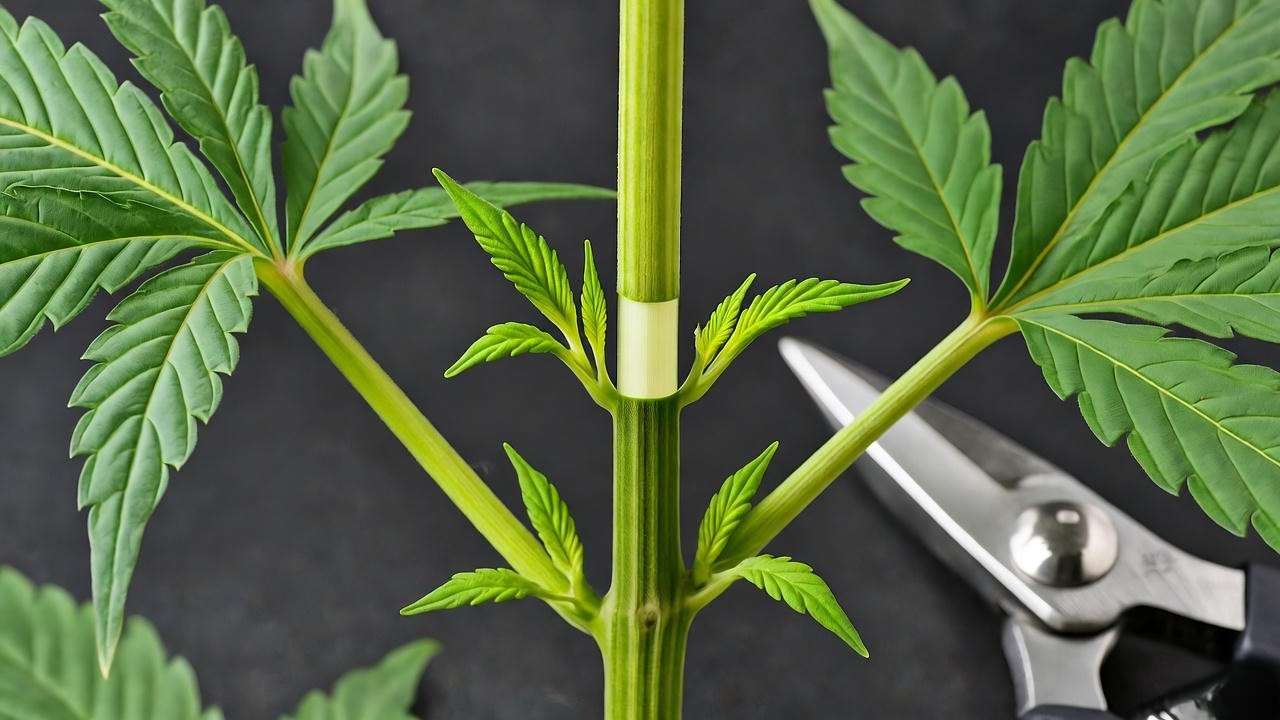
Post-Topping Care Tips 🌿
After topping, your plant needs TLC to recover:
- Watering: Keep soil moist but not waterlogged to support healing.
- Nutrients: Use a balanced vegetative nutrient mix (e.g., 10-5-5 NPK) to boost growth.
- Lighting: Ensure 18-24 hours of light for indoor grows to speed recovery.
- Timeline: Expect new colas to form within 1-2 weeks, with full recovery in 2-3 weeks.
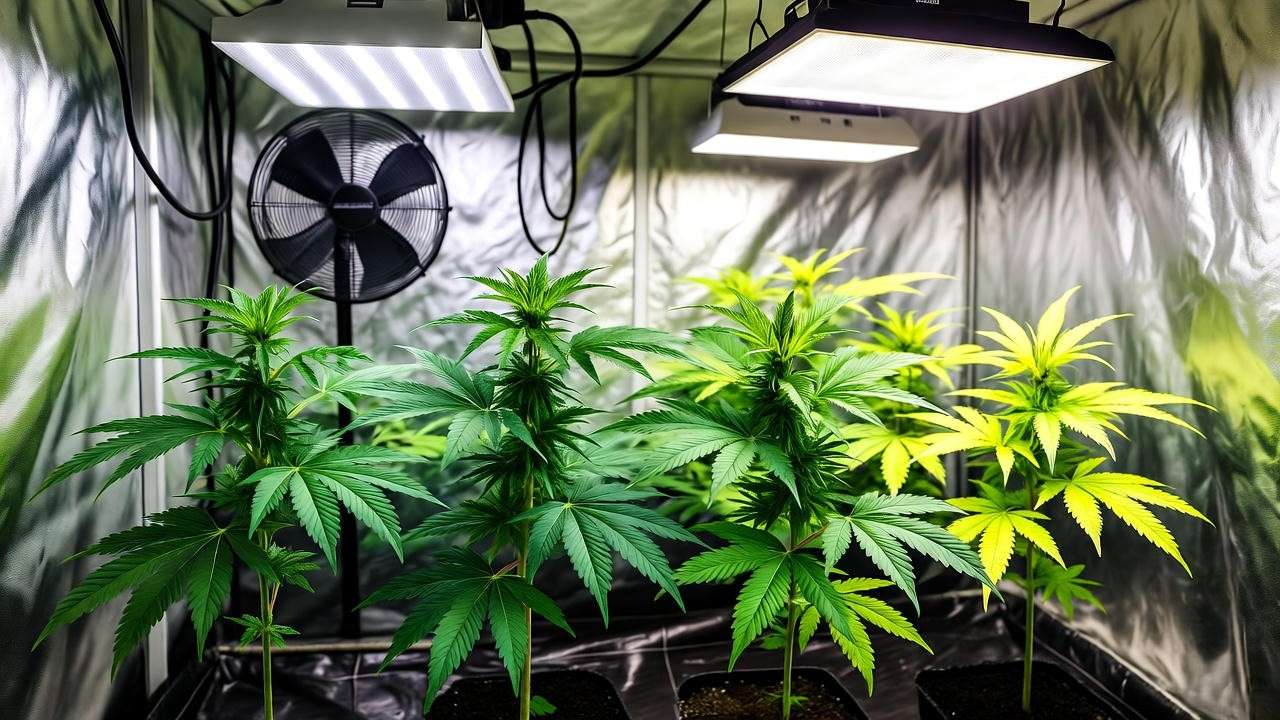
Common Mistakes to Avoid When Topping 🚫
Topping Too Early or Too Late
Topping seedlings (fewer than 3 nodes) can stunt growth, while topping during flowering diverts energy from bud production. Always wait until the plant is robust and in the vegetative stage.
Over-Topping or Improper Cuts 😓
Cutting too much or at a sloppy angle can shock the plant or invite infection. Avoid removing more than the top node in one go, and never cut below the 2nd node, as this can weaken the plant’s structure.
Neglecting Post-Topping Care 🩺
Skipping nutrient boosts or ignoring signs of stress (yellowing leaves, wilting) can slow recovery. Check daily for pests, mold, or nutrient deficiencies, and adjust your grow environment as needed.
Advanced Topping Techniques for Expert Growers 🌟
Combining Topping with Other Training Methods
For growers looking to push their yields even further, topping pairs beautifully with other training techniques. Combining topping with Low-Stress Training (LST) involves gently bending the new colas to create an even canopy, maximizing light exposure. Alternatively, integrating topping with Screen of Green (SCROG) can create a dense, uniform bud layer. Here’s how:
- Top the plant to create multiple colas, then weave branches through a SCROG net to spread them horizontally.
- This combo can increase yields by up to 40% compared to untrained plants.
Another advanced technique is main-lining, where you top the plant multiple times to create a symmetrical “manifold” of 8-16 colas. This requires precision but results in uniform buds and efficient use of light. Expert Tip: Main-lining is best for indoor grows with high-intensity lighting, as it demands consistent energy distribution.
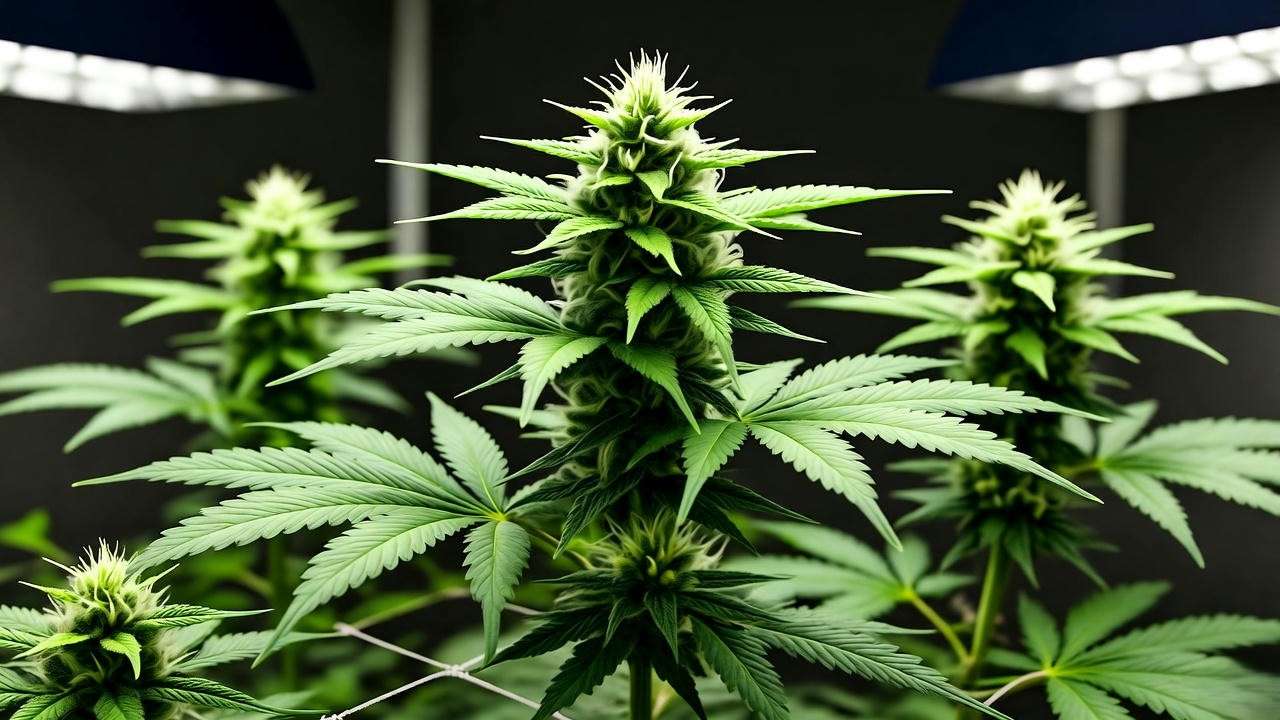
Topping Autoflowering Cannabis Strains 🌱
Autoflowers, with their fixed life cycle, are trickier to top due to their short vegetative phase (2-3 weeks). Topping autoflowers can work but requires careful timing:
- Top only once, ideally at the 3rd node, within the first 2 weeks of growth.
- Use minimal stress techniques, like clean cuts and immediate nutrient support, to avoid stunting.
- Avoid topping weak or slow-growing autoflowers, as they may not recover in time for flowering.
Expert Insight: Cannabis cultivation specialist Dr. Emily Green notes, “Topping autoflowers can yield 10-15% more bud if done early and with precision, but it’s a high-risk, high-reward move. Always prioritize plant health.”
Troubleshooting: What to Do If Topping Goes Wrong 😟
Signs of Stress or Poor Recovery
Topping is mildly stressful, and some plants may show signs of struggle. Watch for:
- Yellowing leaves: Indicates nutrient deficiency or shock. Increase nitrogen-rich fertilizers.
- Wilting or drooping: Suggests overwatering or poor root health. Check soil moisture and drainage.
- Slow growth: No new colas within 7-10 days could mean the cut was too aggressive or the plant was too young.
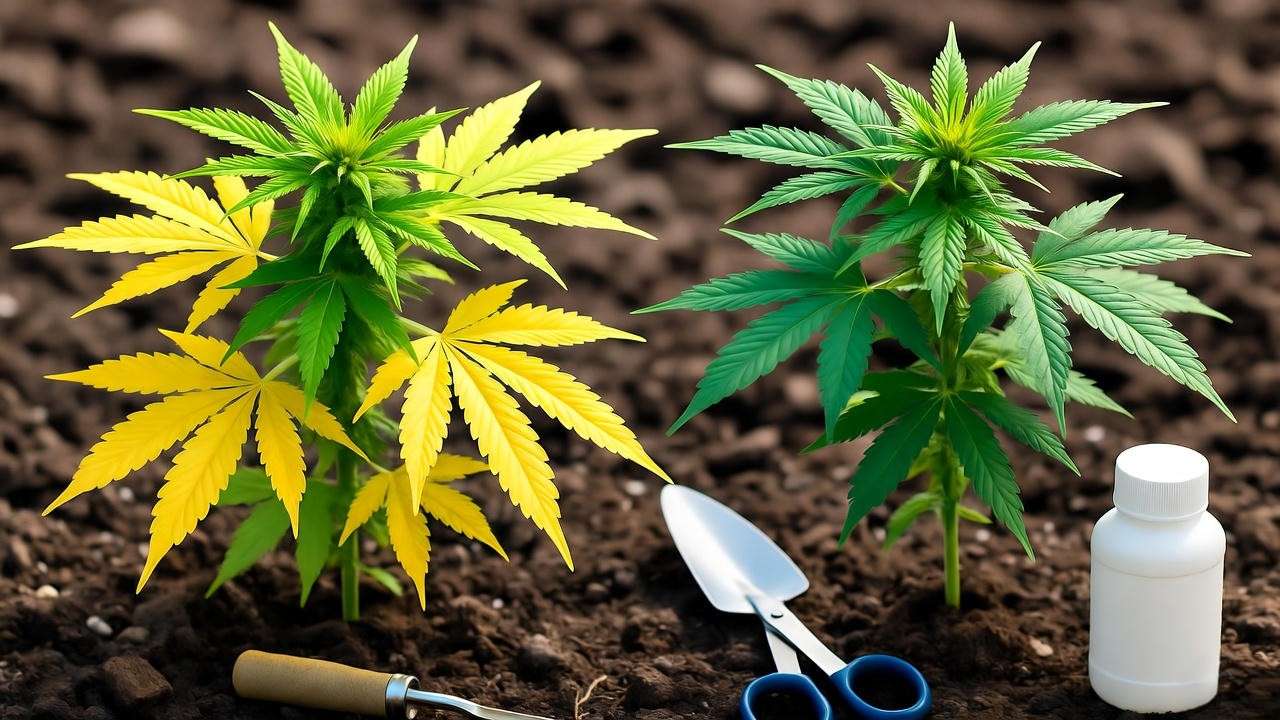
Recovery Strategies 🩹
If your plant shows stress, act quickly:
- Nutrient boost: Apply a vegetative-stage fertilizer (e.g., 10-5-5 NPK) to support recovery.
- Light adjustment: Reduce light intensity slightly (e.g., move grow lights farther away) for 3-5 days to ease stress.
- Environmental tweaks: Maintain 70-80°F and 50-60% humidity to create a healing-friendly environment.
If recovery doesn’t occur within 2 weeks, consider propagating a new plant or consulting a local grower for tailored advice.
Topping for Different Grow Setups 🏡
Indoor Growing Considerations 🛋️
Indoor setups, like grow tents or hydroponic systems, are ideal for topping due to controlled conditions. Key tips:
- Space management: Topping creates wider plants, so ensure your grow tent has enough room (at least 2-3 feet per plant).
- Lighting: Use high-intensity LED or HPS lights to support multiple colas. Adjust light height to 18-24 inches post-topping to prevent burn.
- Airflow: Add oscillating fans to prevent mold, as bushier plants reduce natural airflow.
Outdoor Growing Tips 🌳
Outdoor grows face more variables, but topping can still shine:
- Timing: Top in spring or early summer to allow recovery before flowering (late summer/fall).
- Protection: Use stakes or cages to shield topped plants from wind or heavy rain, which can stress new growth.
- Pest control: Monitor for pests like aphids or spider mites, as topped plants are temporarily more vulnerable. Apply organic neem oil if needed.
Expert Tips for Maximizing Topping Success 🎯
- Use sharp, sterilized tools: Dull scissors can crush stems, slowing recovery. Sterilize with 70% isopropyl alcohol before and after cuts.
- Top early in the vegetative stage: Waiting too long reduces the time for new colas to develop. Aim for 3-5 nodes.
- Pair with nutrients: Use a high-nitrogen feed (e.g., FoxFarm Grow Big) post-topping to fuel explosive growth.
- Monitor light exposure: Ensure all new colas get equal light to prevent uneven bud development.
Expert Quote: “Topping is like giving your plant a roadmap to success. Done right, it’s the difference between a good harvest and a great one,” says John Martinez, a 15-year cannabis cultivator.
FAQs About Topping Weed Plants ❓
How many times can you top a cannabis plant?
You can top 2-3 times during the vegetative stage, depending on plant health and grow space. Each topping creates more colas but increases recovery time.
Does topping hurt the plant?
Topping causes mild stress but doesn’t harm healthy plants when done correctly. Proper care ensures quick recovery.
Can you top autoflowering cannabis strains?
Yes, but only once, early in the vegetative stage, due to their short life cycle. Use caution to avoid stunting.
How long does it take for a plant to recover after topping?
Most plants recover in 1-2 weeks, with new colas forming within 3-7 days if conditions are optimal.
What’s the difference between topping and pruning?
Topping removes the main growth tip to promote bushy growth, while pruning involves trimming lower leaves or branches to improve airflow and light penetration.
Conclusion: Transform Your Cannabis Grow with Topping 🌈
Topping weed plants is a proven, science-backed technique to unlock bigger yields and healthier plants. By strategically cutting the main stem, you can create a bushy canopy packed with bud sites, boosting your harvest by up to 30%. Whether you’re growing indoors or out, this step-by-step guide equips you with the tools, timing, and tips to top like a pro. Start small, follow our expert advice, and watch your plants thrive. Ready to take your grow to the next level? Try topping your next cannabis crop and share your results in the comments below! 🌟
Call to Action: Explore our related articles on LST, pruning, or nutrient schedules for more ways to maximize your grow. Download our free “Topping Checklist” for a handy guide to perfect your technique!

